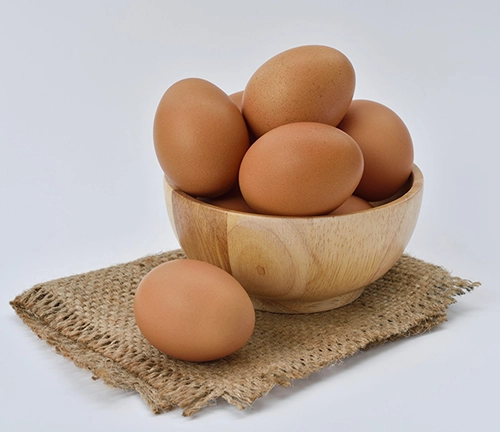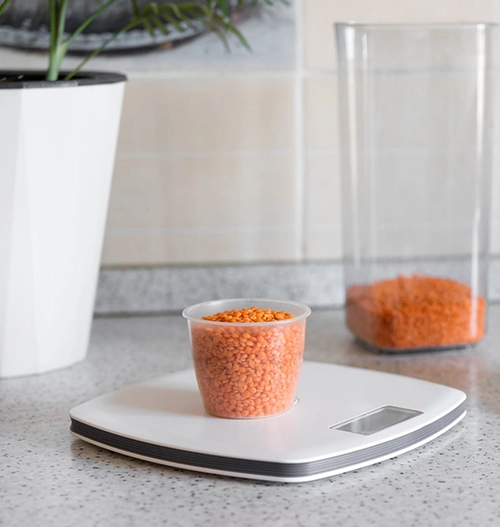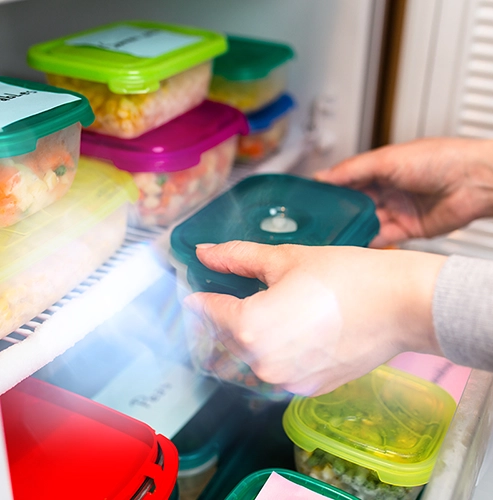Frugal Meal Planning for One: 10 Smart Tips to Save Your Budget
Frugal Meal Planning Living Alone
When you live alone and are cooking for one, it can be tricky to know what to make or how much of it. Meal planning is a great way to keep your food costs down while also ensuring you get the nourishment you need.
For the average American, right behind living expenses, food spending is typically the second highest expense month to month (yikes!). Depending on where you live the majority of the time your home and utility expenses are fixed costs while your food prices are variable costs and can fluctuate based on the market and what you purchase.
To keep your food expenses in check, a great tool to use is creating a frugal meal plan budget to hold yourself accountable to your grocery and take-out spending. Challenge yourself each month to stick to your meal planning efforts whether you want to save money or just eat more meals at home.

Frugal Meal Planning for One
If you struggle with shopping for groceries on a budget or general meal planning when cooking for one, we’ve got some simple tricks that will help make planning meals on a budget as easy as ordering takeout! With these 10 smart tips, you can avoid the dreaded “What should I eat tonight?” question and have wholesome meals ready whenever hunger strikes. Read on for useful advice, practical strategies and money-saving ideas for frugal meal ideas.
1. Make a list of your favorite dinners or food you are in the mood for
When cooking for one I always like to start my frugal meal planning with a list of food I’m excited to eat when I start the process of creating a frugal meal plan. I usually will gather inspiration from a recent takeout meal that I loved, Pinterest for new recipes, or even just browsing food pictures on Instagram.
Get creative with this! You always want to be excited about meals you will be preparing for the week to ensure you want to eat what you’ve prepared in order to minimize food waste and stick to your budget. Nothing is worse than sticking to a meal plan, prepping your meals, and then not being in the mood for the things you’ve prepared that week. The goal is to keep a list of a few delicious meals that are easy to prepare to ease dinner time fatigue.
2. Set a weekly or monthly budget
I know, setting a budget isn’t always fun but we’ve all been guilty of just going to the grocery store and buying what we see without a budget and without a shopping list. Setting a weekly and/or monthly budget will help keep you on track to not overspend or over consume.
The best way to map out this step is to consider how much you are spending now on groceries and estimate if you can cut back on anything. For a person living alone a good number to get started with in your budget might be $50 a week (on average) for groceries or $200 a month. This will vary based on where you live and what grocery stores you go to (it might be higher or lower).
To keep things flexible you might want to factor into your budget some nights for takeout. Do this by setting a maximum number of days you plan to get take out or dine-in with your friends and family and average what you plan to spend on each meal. For example, you might budget for 3 times a week you will eat something other than your groceries and set $20 per meal for $60 a week total for your dine-in/takeout meals.
You will also want to use part of this budget overtime to build out your pantry and freezer staples to keep your weekly costs lower as you go. For example, if oatmeal or olive oil is a staple for you in cooking this is not something you will need to buy weekly. However, the week you purchase a staple item your bill might be slightly higher that week. But don’t worry because it will all average out in your monthly budget of food expenses since your per week amount is on average and you will be looking to hit your monthly food and grocery totals.
3. Create a capsule pantry for easy meals
Piggy backing off the tip above creating a capsule pantry is very useful to keep your overall grocery bill lower over time. What do I mean by capsule pantry? Items that you tend to eat on repeat and always have on-hand so that you can make a quick meal from them in a pinch. For me that is always things like oatmeal, pancake mix, beans, and rice. I typically will buy these items earlier in the month or in bulk and because they last longer I don’t need to include them in my weekly grocery spend. You can also expand your capsule pantry to your freezer and add items that are quick and also help you to build complete meals as they are on sale or you can purchase them at a discount such as meat, vegetables, rice, or convenience foods.
4. Plan around your schedule
This step is very important! Pull out your social calendar and see what you have lined up for the week. If you have a work lunch mark that off your calendar since you won’t need a meal for that day. If you have dinner with your friends one night, mark that off as well. This step allows you to plan around your fun events (or work events) and not prepare or spend money on food that you have no plans of eating for that week. A big pitfall of meal prep is preparing meals without a plan and they end up going bad so check that schedule!
5. Shop your pantry, fridge, and freezer!
Shopping your pantry, freezer, and fridge is a good idea that will help with keeping your weekly costs low. Have you ever been guilty of going to the grocery store and not remembering if you had a staple item like a can of beans or tomatoes? I’ve been guilty of this so many times! This has led me to often over buy or purchase duplicates of items because I wasn’t prepared.
I now start each month by creating a pantry, freezer, and fridge inventory in my phone so that I can better track what I have on hand and what is about to expire. I then prioritize items that are close to expiration to use in my prep for that week. This could be something as simple as produce that it’s on its last leg or milk you want to use up. Write all of those items down to start your meal planning around them. Most times with this step you can really limit your shopping list to just a few fresh components to add to what you already have. For example, if you found chicken and rice in your freezer you could use that to build a more interesting meal knowing that you just need to purchase some fresh produce or make a sauce to create a fun dish.
6. Look at the weekly ads and deals for food ideas to create your frugal meal plan
Spend at least 10-20 minutes shopping the weekly ads from your mailbox or right in your phone app of your favorite grocery stores. I browse what’s on sale that week and write those items down to continue to form my meal plan combined with what’s already in my pantry, fridge, and freezer. This method allows you to decide if you want to shop for things that are the lowest price or supplement your frugal meal plan with items already in your home to create simple meals.
7. Shop food that is in season to create easy recipes
Shopping for food that is in season is one the easiest way to keep your own meal planning low cost and creating balanced meals. This seems like a no brainier but I always seem to be in the mood for fruit or produce when it’s out of season and that can almost always run up your weekly grocery budget. This list will change based on where you live but a good rule of thumb to know which foods are in season. Shopping local and regional to your area can also help out your local farmers! A short cheat sheet is below:
SPRING
Apricots, Artichokes, Arugula, Asparagus, Carrots, Chard, Cherries, Fennel, Grapefruit, Herbs, Kale, Kiwis, Lemons, Lettuce, Parsley, Radishes, Rhubarb, Spinach, Spring Onions, Strawberries, Turnips
SUMMER
Apples, Apricots, Avocados, Basil, Bell Peppers, Blackberries, Blueberries, Cantaloupes, Carrots, Chard, Cherries, Collard Greens, Corn, Cucumbers, Eggplant, Figs, Gooseberries, Grapes, Green Beans, Green Onions, Huckleberries, Lemongrass, Lettuce, Limes, Mangos, Melons, Nectarines, Okra, Peaches, Pears, Peas, Raspberries, Shallots, Spinach, Strawberries, Sweet Peas, Tomatoes, Watermelons, Zucchini, Summer Squash
FALL
Apples, Beets, Broccoli, Brussel Sprouts, Cabbage, Carrots, Cauliflower, Celery, Grapes, Leeks, Mushrooms, Onions, Shallots, Pears, Parsnips, Persimmons, Pomegranates, Potatoes, Radishes, Sweet Potatoes, Squash
WINTER
Beets, Broccoli, Broccoli Rabe, Brussel Sprouts, Cabbage, Carrots, Cauliflower, Celery, Clementine, Grapefruit, Kale, Kiwifruit, Kumquat, Leek, Lemon, Meyer Lemons, Mandarin Orange, Parsnip, Pomelo, Persimmon, Shallot, Tangerine, Turnip, Winter Squash
8. Swap your ingredients for a creative way to give you variety
A great way to stretch your budget is to utilize items that can be re-purposed in multiple recipes for the week. For example, if you are cooking for yourself and buy ground beef and broccoli find at least two ways to use these ingredients in meals for the week instead of making one big recipe. You can use half of the ground beef for taco meat and the other half for burgers to give yourself some variety. This also stops meal prep fatigue if you don’t enjoy eating the same thing every day. To do this create a master list of meals and you’ll be able to quickly identify which meals require which main proteins or ingredients so that you can mix and match.
9. Shop the off brands at your local grocery store
A great way to save money while grocery shopping is to shop the off-brands! My favorite grocery stores for shopping right now are a rotation of: Trader Joe’s, Lidl, Aldi, Wegmans, and Giant. Many times if I’m looking for something like milk, bread, yogurt, and meat the store brand is either specifically made for a brand name dupe or almost identical in quality and ingredients. I’ve come to find that for certain items I actually prefer the store brand to the brand names and these savings can add up. Many consumers have brand name loyalty so it’s hard sometimes to shop the off brands but give it a try with one item each week and see how it compares to what you usually purchase.
10. Spread it out for little effort
Meal planning can get overwhelming with everything else we have going on in life so I like to break up my efforts. When I first started meal planning I would try to weekend warrior my meal plans and end up completely exhausted with a full day of planning, shopping, and cooking. This was in addition to my already planned social activities. Over the years I’ve been able to tweak my methods and now I break things up to make it more palatable using a combination of meal prep strategies to get my prep completed. For example:
Thursday: Make your meal plan and create a list of groceries you need for the upcoming week. I also like to spend time on this day making a general game plan for my prep day such as what order I’ll prep my food, what appliances I might be using so that I can minimize my time in the kitchen.
Pro Tip: Prep your longest cooking foods first (like proteins and starches)
Friday: I will now spend my Friday after work to go to the grocery store. This ends up being faster than you think for just a week of groceries (or if you used a tip from above just items to supplement what you already have in your pantry and freezer). You get in and out and still can enjoy the rest of your Friday night.
Saturday or Sunday: I mark one of these days as my actual “meal prep day” or “time in the kitchen day”. I used to always pick Sunday mornings as my prep day but sometimes I might want to go to brunch with my family on Sundays so I might need to move this to a Saturday morning prep. Be flexible and pick the best time on your schedule for at least one-hour so that you can knock this out. Use your plan from Thursday to guide your flow and you can minimize the time you spend trying to figure out what comes next.
Happy Frugal Meal Planning
Meal planning for one can be challenging, but it doesn’t have to be overwhelming. With the right strategies and techniques, you can save money and time while also eating healthy. It just takes some prep work and good habits to make it happen. If you follow these 9 smart tips, you will be well on your way to frugal eating while meal planning for one. With these tips, you can eat healthy and save money while doing it. So, what are you waiting for? Check out our Resource page for some other ideas of how to cook for one.
Do you utilize meal planning to keep your food budget per month in check? What tips have you used to keep your grocery budget lower each month? Share some below in the comments.





